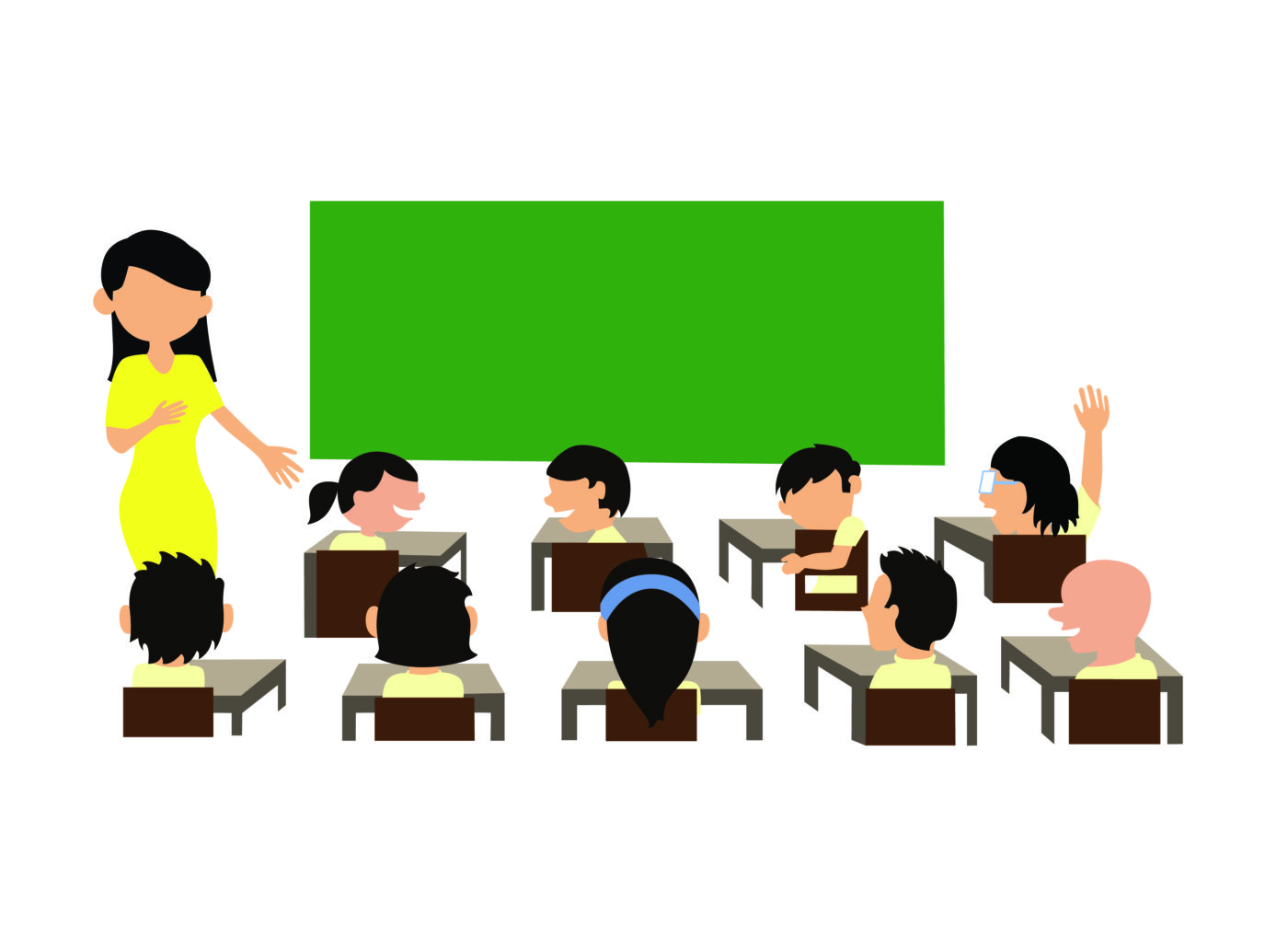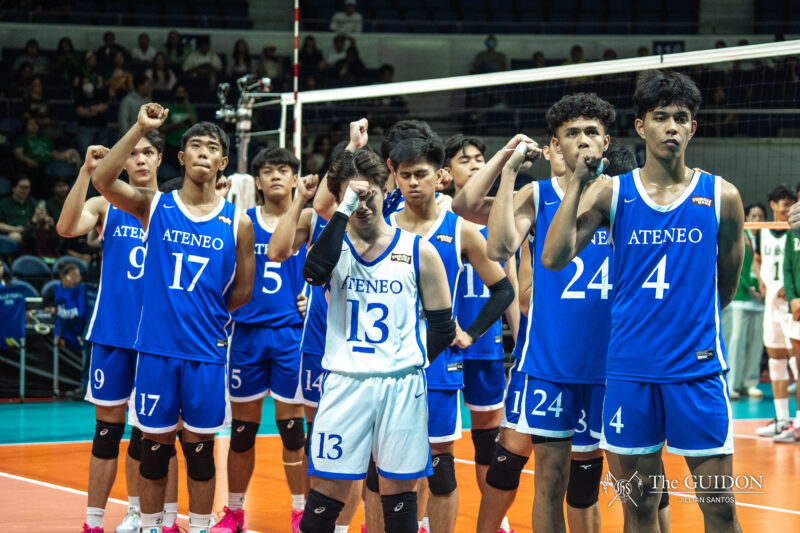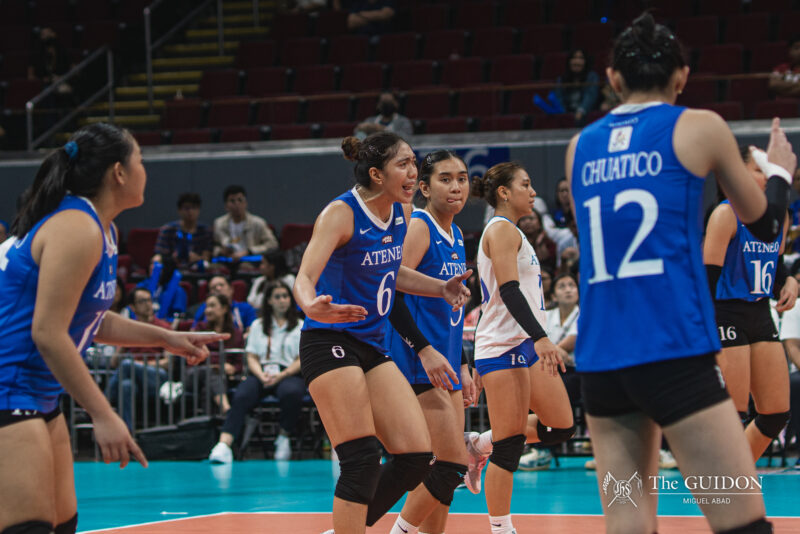BESPECTACLED, SOFT-SPOKEN, clad in a blazer and black trousers—Geminiana Pacheco is a 57-year-old public school teacher who has taught young and eager pupils for 36 years.
The teaching veteran has gone through the tightrope, disciplining rowdy students around the clock while teaching multiple subjects ranging from mathematics, science and English to pupils of Grades 3 and 4 at Batino Elementary School.
“Maliit pa ako, pangarap ko nang maging teacher. ‘Pag naglalaro kami, gusto ko lagi nasa school, mga ginagawa sa school (I was young when I dreamed of becoming a teacher. Whenever we played, I always wanted to be in school and do the activities in school,” reminisces Pacheco, who taught in schools at Quiapo and Bagumbayan prior to Batino.
Some Ateneans have followed along a similar path as well. Sabrina Ongkiko (BS Bio ‘05), best known for her TEDxADMU talk entitled Our Return on Investment, was on her way to medical school when an invitation to teach made her reassess her career choices. She is now on her sixth year of teaching at Culiat Elementary School.
Pacheco and Ongkiko are just few of the many educators who choose to serve public schools. More than a form of public service, teaching has spawned opportunities that seek for better education in the country. But being a public school teacher is no easy task; there are still clear problems within the local educational system.
Education situationer
According to the United Nations Educational, Scientific and Cultural Organization (Unesco), the number of students per class in the Philippines averages at 43.9, nearly three times the ideal class size. Students are forced to crowd into science laboratories, libraries and corridors to address the shortage of proper classrooms.
While Pacheco was lucky with the decent classroom conditions in her district, she laments the congested classrooms in Congressional District 1 due to its high number of enrollees. “That’s hard. It’s noisy and hot. [There is] no learning will,” she says in a mix of English and Filipino, citing the areas of Payatas, Novaliches and Commonwealth.
With nearly 21 million children enrolled in public schools across the Philippines, the alarming ratio of teachers to students is also a vital point of concern. The average teacher to student ratio is 1:36 and 1:35 in elementary and secondary schools respectively. According to a study by the Center for Public Education, the ideal ratio should be around 15 to 18 students per teacher.
In an article from The Philippine Star, Unesco reports that the Philippines remains in the top 10 countries with the highest out-of-school population at 1.46 M. Ongkiko cites poverty as a prevalent issue that affects learning and attributes to absenteeism and dropouts. Due to adverse economic conditions, these children enter the workforce instead.
As a teacher and a government employee, Ongkiko clarifies that it is not easy to implement reforms in a big bureaucracy such as the Department of Education (DepEd). She emphasizes the need for all levels of the agency to collaborate in making the DepEd responsive to students’ needs.
The biggest education reform to date is the Kindergarten to Grade 12 (K-12) program, which aims to adjust the country’s general curriculum to meet globalized standards. The K-12 is notably “part of an umbrella of reforms called the Basic Education [Sector] Reform Agenda (Besra),” Ongkiko explains. Besra is a package of policy reforms aligned to systematically improve the educational system in all aspects.
Delfin Villafuerte (BS ME/AB Eco-H ‘13), who teaches at General Roxas Elementary School, agrees with the plans of the K-12 program, but he observes that it was not as standardized as he had expected. He also questions its preparedness, saying that lesson guides and other materials in his school remain incomplete for the school year. “As with most apprehensions of people about it, it always boils down to the question of execution,” he says.
In spite of these problems, some believe that a strong rapport between teachers and supporters of educational reform is a good foundation for progress. “The students should be our central focus. Conversations in schools should be about our students and not just about compliance to policies,” explains Ongkiko.
Social catalysts
Often because of the debilitating state of public school education, many individuals and organizations have dedicated their lives to paving the way for sustainable progress through acting on their love for teaching.
Alay ni Ignacio (ANI), the student arm of the Ateneo’s Pathways to Higher Education, “aims to form leaders among talented but financially-challenged public high school students, envisioning that they not only get into good universities, but more importantly, that they become the nation’s progress-bearers,” says its president, senior physics major Denz Del Villar.
Having been a physics tutor for two summers, Del Villar feels that he can attest to the students’ diligence and enthusiasm to learn. “ANI’s job is to let them develop and make use of these—in ways that they could not get from their schools—to become good leaders,” he shares.
Today, some of the students who Del Villar taught during his freshman year are studying in the Ateneo. Most of the ANI members are former students who want to “pay it forward.” “I think it would greatly help if there are more people who will dedicate their time, effort and expertise in order for the gap between public and private schools to be minimized,” Del Villar remarks.
Ongkiko was also an active ANI volunteer herself. Passionate for her advocacy in education, she became a spokesperson for a DepEd campaign named Greater Opportunities! Education (GO! Education). “It’s a campaign to spread the reforms that are happening, what DepEd has been doing, and to encourage people to take part in the reforms,” she explains.
Ongkiko also believes that there is ongoing progress towards change. “Honestly, a lot of things have improved—less shortages, how the system is run, even salary [increases]. [But] there are still a lot of things to be done. Reforms should be felt on the ground,” she says.
Bayanihan spirit
After Villafuerte graduated from the Loyola Schools as batch 2013 valedictorian, he did not just go to a public school to teach mathematics across six Grade 3 sections; he also returned to his alma mater, but this time as a Business Statistics lecturer.
For Villafuerte, his decision was not about the desire to teach but the need to utilize his talent and skill in order to serve the country. “I wanted to do something with young people, something youth-oriented, and I have a deep sense of nationalism,” he explains.
Villafuerte recalls one of his Grade 3 pupils named KC, who once believed he was not smart because he could not read. Today, KC has overcome his learning disadvantage and has reached out to his classmates as a leader.
“It’s fulfilling that we never expect to see immediate fruits from what we teach, but sparks like these, changes in such a short span of time, make you realize, ‘Maybe I’m doing something right.’ If I could change at least one life, then maybe it is still worth it,” he says in a mix of English and Filipino.
Moreover, Ongkiko believes in building a community of educators while synergizing the efforts of both public and private sectors in education. “There should be a communal sense of ownership for the things that we do in education. Huwag na umasa sa iisang bayani o iilang bayani na iniisip nating mag-aayos ng mga bagay-bagay para sa atin (Don’t depend on a hero or group of heroes whom you think will fix these things for us),” she adds.
Pacheco stresses that one must accept and commit to teaching as a vocation because the inability to do so will lead one to nowhere, in both one’s career and in inspiring change. “‘Pag nagustuhan mo [ang pagtuturo], tanggapin mo nang buong puso. Dapat talaga bigay-todo rin. (Once you have grown to like teaching, accept it with your whole heart. You should give your all),” she advises.
Villafuerte adds that passion alone will not suffice without skill and dedication. “Passion is something very intangible, and if teaching in a public school is a way to concretize your passion, then you have to make sure you’re doing it wholeheartedly and for the right reasons,” he explains.
What do you think about this story? Send your comments and suggestions here: tgdn.co/2ZqqodZ




